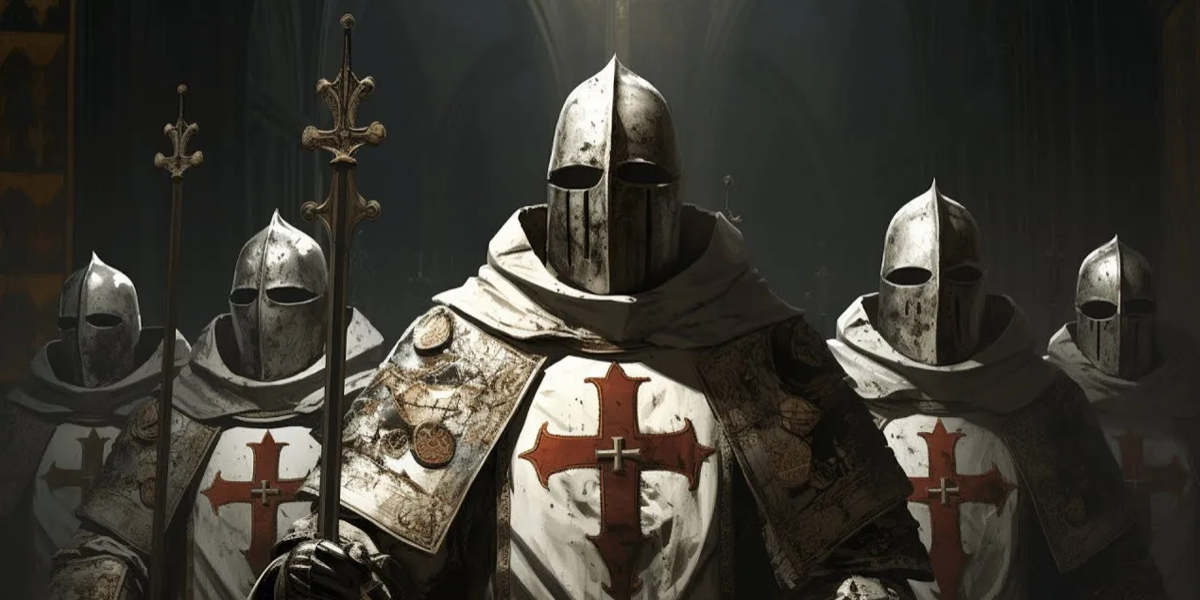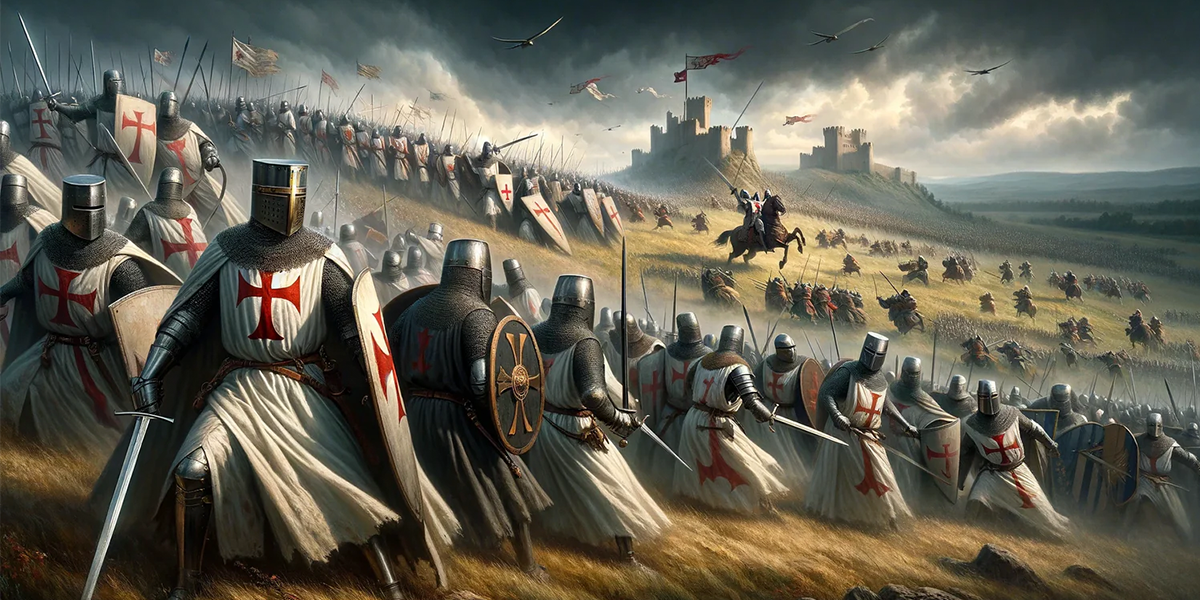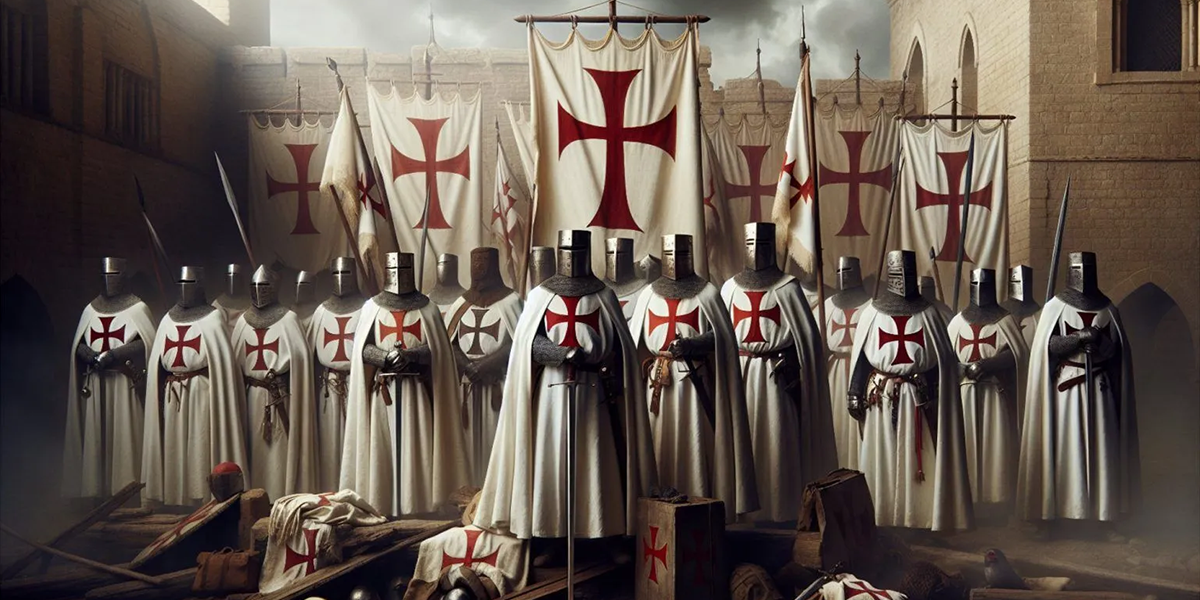In the annals of medieval history, few organizations captivate the imagination quite like the Knights Templar. From their humble beginnings to their dramatic downfall, the story of the Templars is a tale of piety, power, and persecution.

The Genesis of the Order
The Knights Templar, formally known as the Poor Fellow-Soldiers of Christ and of the Temple of Solomon, were founded in 1119 by nine French knights. Their primary mission was to protect Christian pilgrims traveling to the Holy Land after the First Crusade. King Baldwin II of Jerusalem granted them quarters in a wing of the royal palace, believed to be the site of the ancient Temple of Solomon, which inspired their name.
A Vow of Poverty, Obedience, and Chastity
Living a monastic lifestyle, the Templars took vows of poverty, chastity, and obedience. They followed the Rule of St. Benedict, which emphasized communal living, manual labor, and religious devotion. Despite their austere vows, the Templars quickly grew in wealth and influence, thanks in part to generous donations from European nobility.
Military Might and Financial Prowess
The Templars became known for their distinctive white mantles adorned with a red cross, symbolizing their willingness to martyr themselves for their faith. They were a formidable military force, participating in key battles of the Crusades. Their discipline and bravery on the battlefield were legendary, and they played a crucial role in defending the Crusader states in the Levant.
In addition to their martial prowess, the Templars developed an extensive financial network. They established an early form of banking, allowing pilgrims to deposit funds in Europe and withdraw them in the Holy Land. This financial acumen led to immense wealth, making the Templars one of the most powerful economic entities of their time.

The Fall from Grace
The decline of the Templars began with the loss of the Holy Land. By 1291, the Crusader stronghold of Acre fell to Muslim forces, marking the end of Christian control in the region. Without a clear purpose, the Templars’ influence began to wane.
Their downfall was sealed by King Philip IV of France, who was deeply indebted to the order. Seeking to absolve his debts and consolidate power, Philip conspired with Pope Clement V. On Friday, October 13, 1307, Philip ordered the arrest of all Templars in France. They were charged with heresy, idolatry, and other crimes. Under torture, many confessed to these charges, though the veracity of their confessions is highly dubious.

The Trial and Suppression
The Templars were subjected to a series of trials, and their leaders, including Grand Master Jacques de Molay, were burned at the stake in 1314. In 1312, Pope Clement V officially disbanded the order under pressure from Philip IV. The Templars’ vast estates and wealth were seized, with much of it transferred to the Hospitallers, another military order.
Legacy and Legend
Despite their violent suppression, the legacy of the Knights Templar endures. They have been the subject of countless myths and legends, from tales of hidden treasure to theories about their influence on Freemasonry. Their striking history and mysterious demise continue to inspire fascination and speculation.
The story of the Knights Templar is a reminder of the complex interplay between faith, power, and politics in medieval Europe. Their rise to prominence and subsequent fall from grace reflect the volatile nature of the era, where devotion and ambition often intertwined with deadly consequences.



